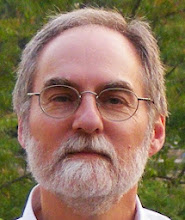
I stood at the graveside of a good woman recently and watched her husband of sixty-two years grieve the loss of his better-half, the “brains of the operation” he called her. At the memorial service the evening before, family and friends told stories about her past and about the lasting impact she has made on those going forward into a future without her. And the minister spoke true and comforting words:
Jesus said, I am the resurrection and I am life.
Those who believe in me, even though they die, yet shall they live,
and whoever lives and believes in me shall never die.
I am Alpha and Omega, the beginning and the end,
the first and the last.
I died, and behold I am alive for evermore,
and I hold the keys of hell and death.
Because I live, you shall live also .
I like what The United Methodist Book of Worship calls the whole constellation of public events surrounding a Christian death: Services of Death and Resurrection. Indeed. It is not only at such services, but perhaps best there, that we are shaken from our myopic focus on the present – the clamor of the daily – and grasp again the fundamental and essentially eschatological nature of our faith. Our faith is a storied faith and we are a storied people: rooted in the past, sojourning in the present, and hoping in and heading toward a glorious future. It was not for nothing that Jesus described himself to John – exiled in the present – as the past and future One:
“I am the Alpha and the Omega, the Beginning and the End,” says the Lord, “who is and who was and who is to come, the Almighty” (Rev 1:8, NKJV).
And while the present is an essential part of the story, it is, after all, only part of the story; so, Paul reminds us: “If in this life only we have hope in Christ, we are of all men the most pitiable” (1 Cor 15:19, NKJV).
The eschatological understanding of our faith – the wrapping up of all things past and present in Jesus, all heading toward future fulfillment in him in the last day (eschaton) – is the antidote for both the unbridled optimism and the abject despair that plague our culture in about equal proportions. It takes only a catastrophe – either personal, as a death, or corporate, as a terrorist attack or an oil spill, to reveal these spiritual follies. In the days immediately following such a disaster, the Optimists often rule with their grandiose plans and their assurances of success.
Optimism is a way of staying useful and being hopeful without having recourse to God. It requires, of course, a much reduced perception of catastrophe if it is to maintain credibility. Optimism comes in two forms, moral and technological. The moral optimist thinks that generous applications of well-intentioned goodwill to the slagheaps of injustice, wickedness, and the world’s corruption will put the world gradually, but surely, in the right. The technological optimist thinks that by vigorously applying scientific intelligence to the problems of poverty, pollution, and neurosis, the world will gradually, but surely, be put right. Neither form of optimism worships God, although the moral optimist sometimes provides ceremonial space for him. Optimists see that there are few things left to do to get the world in good shape, and think that they are just the ones to do it (Eugene Peterson, Reversed Thunder: The Revelation of John and the Praying Imagination).
Should the problem be less than amenable to the Optimists’ solutions, should it drag on interminably, then the Pessimists arise with dire predictions and a pervading sense of hopelessness.
In such a moment let the faithful of God come, those who inhabit the Story, those who are caught up in the eschatological vision of God. Let them come proclaiming the sure end of the Story: a world put to rights, all creation restored and renewed, the holy people of God in worship before him, the holy city – New Jerusalem – come down from heaven to earth with God dwelling in the midst of his people unto the ages of ages. In short, salvation. The holy, eschatological people of God must waste no time with optimism or pessimism; we must be the true realists who face every blessing or catastrophe with the same proclamation: Christ is risen! He is risen, indeed. And because his is risen, we, too, shall rise, and all things shall be made new.
Admittedly, this vision dims from time to time. It is difficult to maintain, in spite of apparently copious evidence to the contrary, that God is even now brooding over the often dark and void face of the earth, renewing the earth and its people, speaking new creation into being through Christ and with Christ and in Christ in the unity of the Holy Spirit. Yet, it is so. The church is, and must be, the evidence we offer for such a vision: a people being made new and whole; a people singing the eschatological hymn – Holy, holy, holy, Lord God Almighty, Who was and is and is to come! – and giving voice to all creation; a people feasting on the eschatological banquet of bread and wine and inviting all to the table:
And the Spirit and the bride say, “Come!” And let him who hears say, “Come!” And let him who thirsts come. Whoever desires, let him take the water of life freely (Rev 22:17, NKJV).
Let the church hold fast the eschatological promise of its Lord: “Surely I am coming quickly.” And let the church answer with its eschatological prayer: “Even so, come, Lord Jesus!”
Amen.
Jesus said, I am the resurrection and I am life.
Those who believe in me, even though they die, yet shall they live,
and whoever lives and believes in me shall never die.
I am Alpha and Omega, the beginning and the end,
the first and the last.
I died, and behold I am alive for evermore,
and I hold the keys of hell and death.
Because I live, you shall live also .
I like what The United Methodist Book of Worship calls the whole constellation of public events surrounding a Christian death: Services of Death and Resurrection. Indeed. It is not only at such services, but perhaps best there, that we are shaken from our myopic focus on the present – the clamor of the daily – and grasp again the fundamental and essentially eschatological nature of our faith. Our faith is a storied faith and we are a storied people: rooted in the past, sojourning in the present, and hoping in and heading toward a glorious future. It was not for nothing that Jesus described himself to John – exiled in the present – as the past and future One:
“I am the Alpha and the Omega, the Beginning and the End,” says the Lord, “who is and who was and who is to come, the Almighty” (Rev 1:8, NKJV).
And while the present is an essential part of the story, it is, after all, only part of the story; so, Paul reminds us: “If in this life only we have hope in Christ, we are of all men the most pitiable” (1 Cor 15:19, NKJV).
The eschatological understanding of our faith – the wrapping up of all things past and present in Jesus, all heading toward future fulfillment in him in the last day (eschaton) – is the antidote for both the unbridled optimism and the abject despair that plague our culture in about equal proportions. It takes only a catastrophe – either personal, as a death, or corporate, as a terrorist attack or an oil spill, to reveal these spiritual follies. In the days immediately following such a disaster, the Optimists often rule with their grandiose plans and their assurances of success.
Optimism is a way of staying useful and being hopeful without having recourse to God. It requires, of course, a much reduced perception of catastrophe if it is to maintain credibility. Optimism comes in two forms, moral and technological. The moral optimist thinks that generous applications of well-intentioned goodwill to the slagheaps of injustice, wickedness, and the world’s corruption will put the world gradually, but surely, in the right. The technological optimist thinks that by vigorously applying scientific intelligence to the problems of poverty, pollution, and neurosis, the world will gradually, but surely, be put right. Neither form of optimism worships God, although the moral optimist sometimes provides ceremonial space for him. Optimists see that there are few things left to do to get the world in good shape, and think that they are just the ones to do it (Eugene Peterson, Reversed Thunder: The Revelation of John and the Praying Imagination).
Should the problem be less than amenable to the Optimists’ solutions, should it drag on interminably, then the Pessimists arise with dire predictions and a pervading sense of hopelessness.
In such a moment let the faithful of God come, those who inhabit the Story, those who are caught up in the eschatological vision of God. Let them come proclaiming the sure end of the Story: a world put to rights, all creation restored and renewed, the holy people of God in worship before him, the holy city – New Jerusalem – come down from heaven to earth with God dwelling in the midst of his people unto the ages of ages. In short, salvation. The holy, eschatological people of God must waste no time with optimism or pessimism; we must be the true realists who face every blessing or catastrophe with the same proclamation: Christ is risen! He is risen, indeed. And because his is risen, we, too, shall rise, and all things shall be made new.
Admittedly, this vision dims from time to time. It is difficult to maintain, in spite of apparently copious evidence to the contrary, that God is even now brooding over the often dark and void face of the earth, renewing the earth and its people, speaking new creation into being through Christ and with Christ and in Christ in the unity of the Holy Spirit. Yet, it is so. The church is, and must be, the evidence we offer for such a vision: a people being made new and whole; a people singing the eschatological hymn – Holy, holy, holy, Lord God Almighty, Who was and is and is to come! – and giving voice to all creation; a people feasting on the eschatological banquet of bread and wine and inviting all to the table:
And the Spirit and the bride say, “Come!” And let him who hears say, “Come!” And let him who thirsts come. Whoever desires, let him take the water of life freely (Rev 22:17, NKJV).
Let the church hold fast the eschatological promise of its Lord: “Surely I am coming quickly.” And let the church answer with its eschatological prayer: “Even so, come, Lord Jesus!”
Amen.





2 comments:
Sorry for my bad english. Thank you so much for your good post. Your post helped me in my college assignment, If you can provide me more details please email me.
Anonymous,
I would be happy to discuss this issue further with you. But, since you commented anonymously, I have no reply email for you. Please contact me at knoxtrinity@aol.com with your questions.
Peace of Christ,
John
Post a Comment